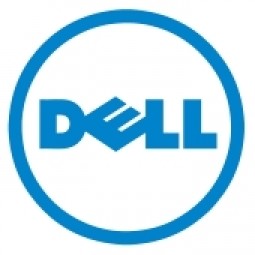Microsoft
Empowering Us All.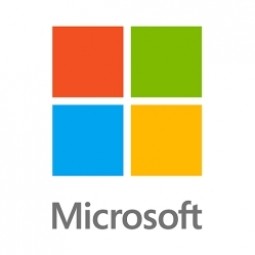
Overview
|
HQ Location
United States
|
Year Founded
1975
|
Company Type
Public
|
Revenue
> $10b
|
|
Employees
> 50,000
|
Website
|
Stock Ticker
NASDAQ: MSFT
|
Twitter Handle
|
Company Description
Microsoft develops, manufactures, licenses, supports and sells computer software, consumer electronics and personal computers and services. Its best known software products are the Microsoft Windows line of operating systems, Microsoft Office office suite, and Internet Explorer and Edge web browsers.
Year Founded: 1975
Revenue: $93.6 billion (2014)
NASDAQ: MSFT
Year Founded: 1975
Revenue: $93.6 billion (2014)
NASDAQ: MSFT
IoT Solutions
The Internet of Things (IoT) does not need to be complicated. It doesn’t have to be about billions or trillions of devices. The Internet of Things is here today, and it’s a practical and applicable technology trend that can generate return on investment (ROI) and drive efficiencies and insights for organizations that know how to use it.
The advancements in connectivity, processing power, form factors, operating systems, and applications, among other technology breakthroughs, are key elements to unlocking value from IoT.
With the Microsoft Azure Internet of Things Suite, companies can monitor assets to improve efficiencies, drive operational performance to enable innovation, and use advance data analytics to transform the business with new business models and revenue streams. Small changes can have a big impact to companies' bottom line. When a company take advantage of the Microsoft Cloud Platform, they can use the Azure IoT Suit to help them move faster, do more, save money, and capture the benefits of the Internet of Things for their business.
The advancements in connectivity, processing power, form factors, operating systems, and applications, among other technology breakthroughs, are key elements to unlocking value from IoT.
With the Microsoft Azure Internet of Things Suite, companies can monitor assets to improve efficiencies, drive operational performance to enable innovation, and use advance data analytics to transform the business with new business models and revenue streams. Small changes can have a big impact to companies' bottom line. When a company take advantage of the Microsoft Cloud Platform, they can use the Azure IoT Suit to help them move faster, do more, save money, and capture the benefits of the Internet of Things for their business.
Key Customers
KUKA, Rockwell Automation, ThyssenKrupp
Subsidiary
IoT Snapshot
Microsoft is a provider of Industrial IoT infrastructure as a service (iaas), platform as a service (paas), application infrastructure and middleware, analytics and modeling, functional applications, cybersecurity and privacy, networks and connectivity, and sensors technologies, and also active in the automotive, buildings, chemicals, cities and municipalities, construction and infrastructure, consumer goods, electronics, equipment and machinery, finance and insurance, food and beverage, healthcare and hospitals, metals, mining, oil and gas, pharmaceuticals, renewable energy, retail, transportation, and utilities industries.
Technologies
Analytics & Modeling
Big Data Analytics
Machine Learning
Computer Vision Software
Data Mining
Digital Twin / Simulation
Edge Analytics
Natural Language Processing (NLP)
Predictive Analytics
Real Time Analytics
Infrastructure as a Service (IaaS)
Cloud Computing
Cloud Databases
Cloud Storage Services
Hybrid Cloud
Cloud Middleware & Microservices
Others
Private Cloud
Public Cloud
Cybersecurity & Privacy
Cloud Security
Intrusion Detection
Malware Protection
Network Security
Security Compliance
Application Security
Identity & Authentication Management
Platform as a Service (PaaS)
Application Development Platforms
Data Management Platforms
Device Management Platforms
Use Cases
Functional Areas
Industries
Services
Technology Stack
Microsoft’s Technology Stack maps Microsoft’s participation in the infrastructure as a service (iaas), platform as a service (paas), application infrastructure and middleware, analytics and modeling, functional applications, cybersecurity and privacy, networks and connectivity, and sensors IoT Technology stack.
-
Devices Layer
-
Edge Layer
-
Cloud Layer
-
Application Layer
-
Supporting Technologies
Technological Capability:
None
Minor
Moderate
Strong

Supplier missing?
Start adding your own!
Register with your work email and create a new supplier profile for your business.
Case Studies.

Case Study
HEINEKEN Uses the Cloud to Reach 10.5 Million Consumers
For 2012 campaign, the Bond promotion, it planned to launch the campaign at the same time everywhere on the planet. That created unprecedented challenges for HEINEKEN—nowhere more so than in its technology operation. The primary digital content for the campaign was a 100-megabyte movie that had to play flawlessly for millions of viewers worldwide. After all, Bond never fails. No one was going to tolerate a technology failure that might bruise his brand.Previously, HEINEKEN had supported digital media at its outsourced datacenter. But that datacenter lacked the computing resources HEINEKEN needed, and building them—especially to support peak traffic that would total millions of simultaneous hits—would have been both time-consuming and expensive. Nor would it have provided the geographic reach that HEINEKEN needed to minimize latency worldwide.

Case Study
Driving Digital Transformations for Vitro Diagnostic Medical Devices
Diagnostic devices play a vital role in helping to improve healthcare delivery. In fact, an estimated 60 percent of the world’s medical decisions are made with support from in vitrodiagnostics (IVD) solutions, such as those provided by Roche Diagnostics, an industry leader. As the demand for medical diagnostic services grows rapidly in hospitals and clinics across China, so does the market for IVD solutions. In addition, the typically high cost of these diagnostic devices means that comprehensive post-sales services are needed. Wanteed to improve three portions of thr IVD:1. Remotely monitor and manage IVD devices as fixed assets.2. Optimizing device availability with predictive maintenance.3. Recommending the best IVD solution for a customer’s needs.

Case Study
GE Healthcare Delivers Core Customer Solutions on the Microsoft Cloud
Two of the company’s businesses—GE Healthcare IT and GE Healthcare Global Services—sought to provide customers with more flexible, yet secure cloud solutions. GE Healthcare IT software and services for Integrated Care create actionable insight across the healthcare system and the care pathway, enabling better clinical and financial outcomes. Healthcare Global Services help health systems manage their operational resources to deliver high quality care safely, efficiently, and affordably. Both business groups knew that while healthcare providers worldwide need better insight and control over data to both improve efficiency and improve clinical care, they must also protect patient information and meet increasingly challenging regulatory requirements Moreover, the company sought to meet its goals without investing additional time and money in on-premises infrastructure.In the United States, GE Healthcare sought to simplify Meaningful Use (MU) reporting to help facilitate the MU attestation required to qualify for incentives from programs established through the Health Information Technology for Economic and Clinical Health Act (HITECH Act). Customers in other countries also have compliance needs, and GE Healthcare wanted a solution that it could easily adapt to a wide range of privacy and security requirements.

Case Study
French grocery chain halves inventory processing time
Chronodrive is a drive-through grocery service in France: customers shop online and drive to neighborhood pickup points where their purchases are loaded into their cars. With more than 60 grocery stores in France, two in Italy, and more on the way, Chronodrive needs up-to-the-minute knowledge of what’s selling in each store so that it can order the right inventory for the next day. To stay agile, competitive, and operationally lean in a highly competitive and fast-growing market, Chronodrive migrated its entire on-premises datacenter to the cloud in late 2014, with most workloads moving to Microsoft Azure. Azure is a public cloud environment that provides compute, storage, networking, and other services for creating and hosting applications in Microsoft datacenters.

Case Study
Using Data to Make Operators and Maintenance Staff Efficient
Some of Elipse's customers have very large plants, and when the technicians are out in the plant, they cannot see the status of plant instrumentation. When doing calibrations or inspections, they have to radio back to the control room, which slows the work and can extend downtime.

Case Study
Improve the Efficiency and Safety of Liposuction with Data Analysis
Liposuction is a surgery that removes fat from the human body with cannula, a tube that can be inserted into the body. Extracting fat is a very complex surgery procedure. The cannula should precisely reach to the fatty tissue between skin and muscles. When the cannula is injected into deeper issue, it may damage muscle issue. If the cannula isn’t inserted enough, the fat maybe removed unevenly or causes skin necrosis. The fine senses of surgeon is certainly important.Injecting cannula and extracting fat occur 12,000 to 20,000 times per one surgery. It means that moving cannula in time-uniformly is critical. However, every patients has different types of fatty tissue and areas operated on. Due to this complexity of the procedure, skillful surgeon having plenty of experiences were favoured.
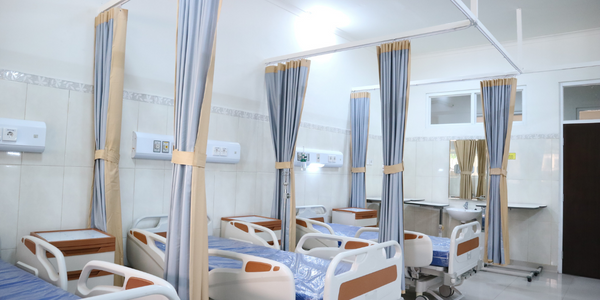
Case Study
Top Hospital Working to Develop a “Digital Companion” that Could Save Lives
To help more people live longer, cardiologists need data such as electrocardiogram (ECG) readings or blood pressure measurements collected over weeks, months, or even longer. To make such data collection possible, a consortium of 37 organizations built an Internet of Things (IoT) prototype called Digital and Analog Companions for an Aging Population (digilog). Using a fitness band and tiny wearable sensors, digilog captures and sends a patient’s ECG readings and other health measurements to Microsoft Azure. There, IoT and other services transform disparate medical data into easy-to-read summative dashboards and key performance indicators (KPIs), which users and their physicians can view from a mobile app or a web portal. As digilog undergoes extensive tests, its creators are excited by its potential to save lives, lower healthcare costs, and provide needed care in remote and underdeveloped regions.
Case Study
Alstom's Digital Transformation with Microsoft Azure for Sustainable Mobility
Alstom, a leading rail company, is committed to providing sustainable and digital mobility solutions to a world undergoing significant change. The company's strategic plan for 2025 focuses on providing smarter and more sustainable mobility, which necessitates the acceleration of its digitalization efforts. Alstom operates across the entire value chain, from high-speed trains to onboard systems, and is organized around three divisions: rolling stock manufacturing, signaling, and maintenance. Each division is developing digital applications to enhance the rail service offered to its customers. Key objectives include ensuring the punctuality of transport services, improving fleet orchestration, providing high-quality information on intermodality, and enhancing safety. Alstom also aims to reduce the environmental impact of its operations through digital services that identify sustainable solutions. However, the company faced the challenge of rationalizing its infrastructure and capitalizing on rapid innovation.
Case Study
Empowering Citizen Developers: Accenture's Innovation with Power Platform
Accenture, a global professional services and consulting agency, was facing a challenge common to many large organizations: the demand for IT solutions was greater than what could be met by the central IT team. The company wanted to democratize and evangelize a low-code platform to empower citizen developers to solve their own problems. Accenture recognized the value of Microsoft's Power Platform and aimed to grow its Center of Excellence (CoE) to offer all five Power Platform products at scale. The goal was to reduce IT demand for short-term applications by 30 percent, allowing professional developers to focus on more complex projects. The challenge was to change the culture by decentralizing what is traditionally seen as a centralized function, and to find a solution that would accelerate productivity and give employees an opportunity to solve problems in real time.
Similar Suppliers.
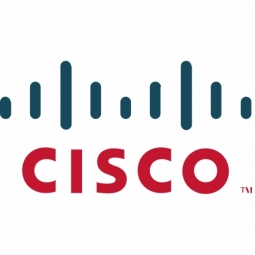
Supplier
Cisco
Cisco designs and sells broad lines of products, provides services, and delivers integrated solutions to develop and connect networks around the world, building the Internet. Over the last 30 plus years, they have been the world’s leader in connecting people, things, and technologies - to each other and to the Internet - realizing their vision of changing the way the world works, lives, plays, and learns.Today, Cisco has over 70,000 employees in over 400 offices worldwide who design, produce, sell, and deliver integrated products, services, and solutions. Over time, they have expanded to new markets that are a natural extension of their core networking business, as the network has become the platform for automating, orchestrating, integrating, and delivering an ever-increasing array of information technology (IT)–based products and services.Subsidiaries/ Business Units: - Jasper - OpenDNS - CloudLock
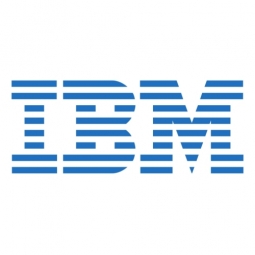
Supplier
IBM
IBM is an American multinational technology and consulting corporation that manufactures and markets computer hardware, middleware, and software, and offers infrastructure, hosting, and consulting services in areas ranging from mainframe computers to nanotechnology. IBM is intent on leading the development of a global data field.
---nasdaq--amzn_14.jpg)
Supplier
Amazon Web Services
Amazon Web Services has developed the managed cloud platform AWS IoT to let connected devices easily and securely interact with cloud applications and other devices. AWS IoT can support billions of devices and trillions of messages, and can process and route those messages to AWS Endpoints and to other devices reliably and securely. With AWS IoT, your applications can keep track of and communicate with all your devices, all the time, even when they aren’t connected.On top of this platform, AWS also offers a variety of analytics solutions by AWS or third-party suppliers that can help meet all kinds of needs related to data analysis.
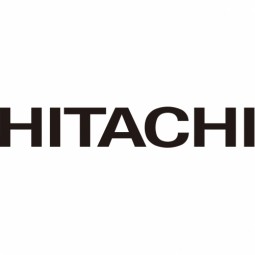
Supplier
Hitachi
Hitachi is a highly diversified company that operates eleven business segments: Information & Telecommunication Systems, Social Infrastructure, High Functional Materials & Components, Financial Services, Power Systems, Electronic Systems & Equipment, Automotive Systems, Railway & Urban Systems, Digital Media & Consumer Products, Construction Machinery and Other Components & Systems.Year founded: 1910Revenue: $94.0 billion (2014)TYO: 6501









